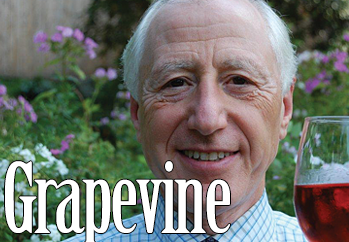The Challenges Facing Small California Wineries
Opinion Advocates for ideas and draws conclusions based on the author/producer’s interpretation of facts and data.
 The California agricultural industry is the juggernaut of the food industry. It supplies more farmed table products to the world than any other nation.
The California agricultural industry is the juggernaut of the food industry. It supplies more farmed table products to the world than any other nation.
On a micro level, the California wine industry supplies over 90 percent of wine produced domestically. And wine is big business. More than 80 percent of all wine produced in the United States is by 2 percent of winemakers.
These winemaking behemoths impact the entire food chain, not to mention the influence they exert on consumers’ drinking habits.
But what of the other 98 percent? Whether they are hobbyists dabbling in premium wines as a pastime or dedicated farmers seeking to eke out a living, these winemakers must cope with the same economic conditions and environmental vagaries as the giants of the industry, yet oftentimes without similar capital wherewithal.
Just in the last five years, I’ve noticed changes occurring up and down the California coast that are affecting the future of wineries, but seem to be placing a heavier strain on small producers as they cope with a realignment of the industry.
So what are these conditions and how are the 98 percent coping with them?
- Economics and finances. A number of the small producers set out in the 1970s and ‘80s as ambitious, idealistic farmers seeking to “get back to nature” and “buck the establishment.” Back then land was inexpensive and their energy for farming that land was boundless.
Fast forward to the 21st century.
Land values have skyrocketed. Prices for prime vineyard land have been growing at an average of 10 to 20 percent. Today, an acre of prime Napa Valley land can cost a whopping $1 million. (By comparison, vineyard land in Tuscany’s Chianti Classico averages $55,000.)
The astute winemaker investing in land in the late 1970s is living on and farming valuable property. But as many investors found out during and after the pandemic, equity does not generate the cash flow necessary to meet the rising costs of running a business. Longtime winemakers are overleveraged and are being forced to sell their operations, at times for significant discounts.
- Replanting vines. Grapevines do not age gracefully. Production begins to diminish after 20 to 30 years; vines are typically replaced within 30 years of planting. It is now that time in the vineyard life cycle in the United States. It is estimated that 15 percent of grapevines in Napa Valley will be replaced in the next few years – at a hefty cost. This is placing additional stress on cash-strained winemakers.
- Mother Nature. She smiled down on California’s winemakers in 2021 and 2022 with excellent vintages, which produced excellent fruit and yields. The 2023 vintage is progressing well, with the impact of the prolonged drought not having any material impact on yields. Hope springs eternal in the breast of the stressed farmer.
- Succession. As the first-generation winemakers of the 1970s and ‘80s near retirement age, there is rarely a family member willing, or ready, to take over the reins.
In the United States, winemakers face much higher costs than their Western European multigenerational counterparts – and therefore a higher cash breakeven point. From the significant cash investment in land to the hired help to manage and operate the winery, smaller wineries seem to be on the cusp of insolvency more often than not. Not an appealing proposition for the next generation, if indeed there is one in the family portrait.
As the California wine industry rides the heady success of the 2023 harvest season, Father Time and the long-term effects of the recent financial downturns are playing out. Consolidation in the last five years has been higher than any in recent memory. The 2 percent are slowly transitioning into the 1 percent, as retiring or cash-strapped small producers exit.
What will the next five years bring to this industry? Perhaps only time – and the banks – will be able to tell us.
Nick Antonaccio is a 45-year Pleasantville resident. For over 25 years, he has conducted wine tastings and lectures. Nick is a member and program director of the Wine Media Guild of wine journalists. He also offers personalized wine tastings. Nick’s credo: continuous experimenting results in instinctive behavior. You can reach him at nantonaccio@theexaminernews.com.
